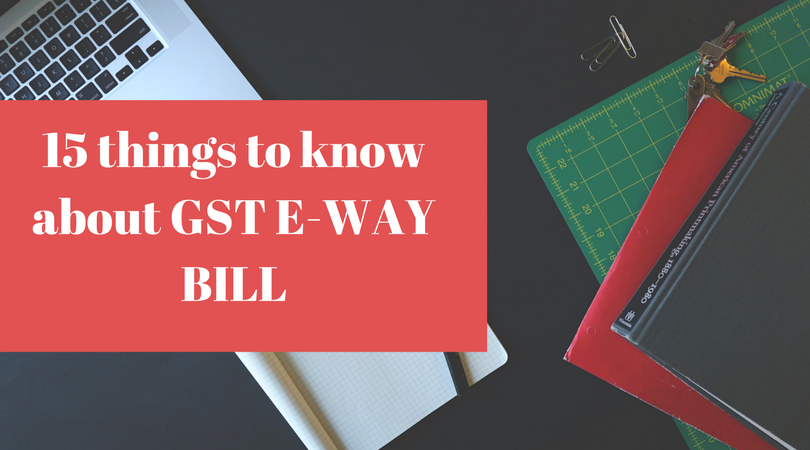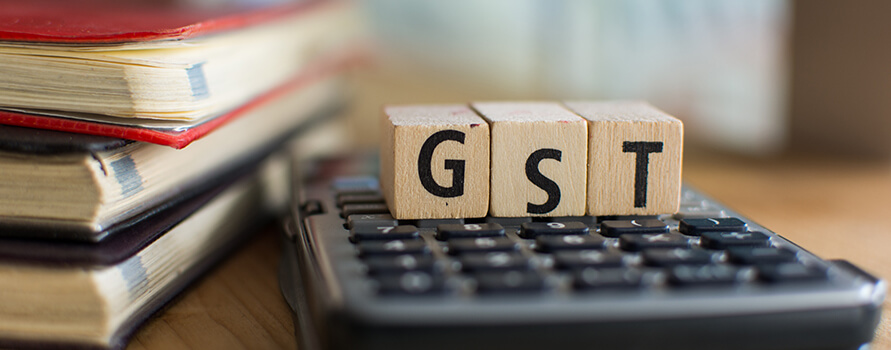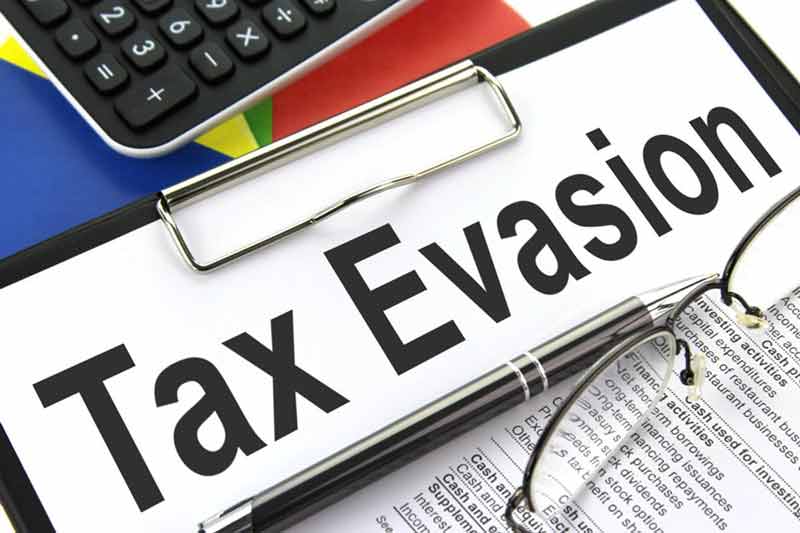GST E-Way bill : 15 things you must know
15 Things you must know about the E-Way Bills introduced under the GST regime.
E-way bill is an electronic bill generated for the movement of the goods from one place to another. This bill can be generated on the GST Common Portal. The details of the GST E-way bill are enlisted below :-
1. Who has to furnish the bill?
Every registered business that causes movement of goods from one place to another has to furnish the bill electronically, giving details about the said goods in Part A of FORM GST EWB-01, before the commencement of such movement.
2. When is it compulsory to submit the bill?
If the value of goods in consignment exceeds ₹50,000, then it is necessary to furnish and submit the bill. Otherwise, it is optional to generate and carry e-way bill (that is if the consignment value is less than ₹50,000).
3. When is the E-Way Bill not required?
The e-way bill is not required under the following circumstances :-
- If the goods are being transported intra-state for a distance less than 10 kms from the place of business of the supplier.
- If the goods are mentioned in the annexure to the Notification no 27/2017 (which specifies exempted and nil rated goods)
- If the goods are being transported by a non-motorised vehicle;
- If the goods are transported from sea port, airport or land customs station to an inland container depot or a container freight station for clearance by Customs Department.
4. Supply by an unregistered person?
If the supply is done by an unregistered person to a registered recipient, then the movement is said to be caused by the registered recipient if the recipient is aware at the time of commencement of the movement of goods.
5. Who has to generate the bill?
If goods are handed over to a transporter for transportation by road by a registered person, then the registered person has to furnish the information relating to the transporter in Part B of form GST EWB – 01 and the e-way bill shall be generated by the transporter.
6. Movement caused by an unregistered person?
When movement is caused by an unregistered person either in his own conveyance or a hired one or through a transporter. The unregistered person or the transporter may, at their option, generate the e-way bill.
7. Movement caused by a registered person as consignor or consignee?
If a registered person himself transports the goods as a consignor or as a consignee with his own vehicle or a hired vehicle (including public transportation like the railways or vessel), such person has to furnish details and generate bill.
8. What is the E-way bill Number (EBN)?
After generating the e-way bill on GST common portal, a unique e-way bill number (EBN) is made available to the supplier, the recipient and the transporter (if any) as well on the common portal. This number can be used to verify the authenticity of the E-Way bill.
9. Recipient’s acceptance or rejection of e-way bill?
The recipient (if registered) is given the details of the e-way bill when it is generated. The recipient has to communicate his acceptance or rejection of the consignment within 72 hours. If he does not make any communication within 72 hours, then it is deemed that he has accepted the details given in the e-way bill.
10. What is the validity of an e-way bill?
The e-way bill is valid in all the States and Union territories. But, the period for which the bill is valid is based upon the following conditions :- a.) Upto 100 Km – 1 day b.) For every 100 km or part thereof thereafter – 1 additional day. The validity period shall be counted from the exact time at which the e-way bill is generated and each day is to be counted as 24 hours.
11. Transfer of goods in transit from one vehicle to another?
If a transporter transfers the goods in transit from one conveyance to another, then he is required to update the details of new vehicle/mode of transport in the e-way bill before such transfer.
12. If more than one consignment is transported together?
If more than one consignment is to be transported in one conveyance, then the transporter shall indicate the E-way bill number (EBN) of e-way bills of each consignment and a consolidated e-way bill shall be generated by him before the movement of goods.
13. Physical verification of goods?
A physical verification of the goods in transit can be done by the Commissioner or the officer in charge. However, no further physical verification of the said goods can be done again at any place, if the physical verification of goods has been done before at ant place within the State or in any other State, unless any specific information is made available subsequently which indicates a matter of tax evasion.
14. What to do if a vehicle is intercepted for more than 30 minutes?
If a vehicle is being intercepted or detained for a more than thirty minutes, then the transporter (or person in charge or carrying the goods) can upload the said information in FORM GST EWB-04 on the GST common portal.
15. What other documents are to be carried?
The transporter (or the person carrying the goods) has to carry the invoice or bill of supply or delivery challan, as the case may be along with the copy of e-way bill.
To read more about the Goods and Service Tax, click here.





Nice Information , Best site ever .
Pingback: How to generate E-Way bill online? - Your Columnist
Great info.
It was very informative. Thanks a lot for sharing.